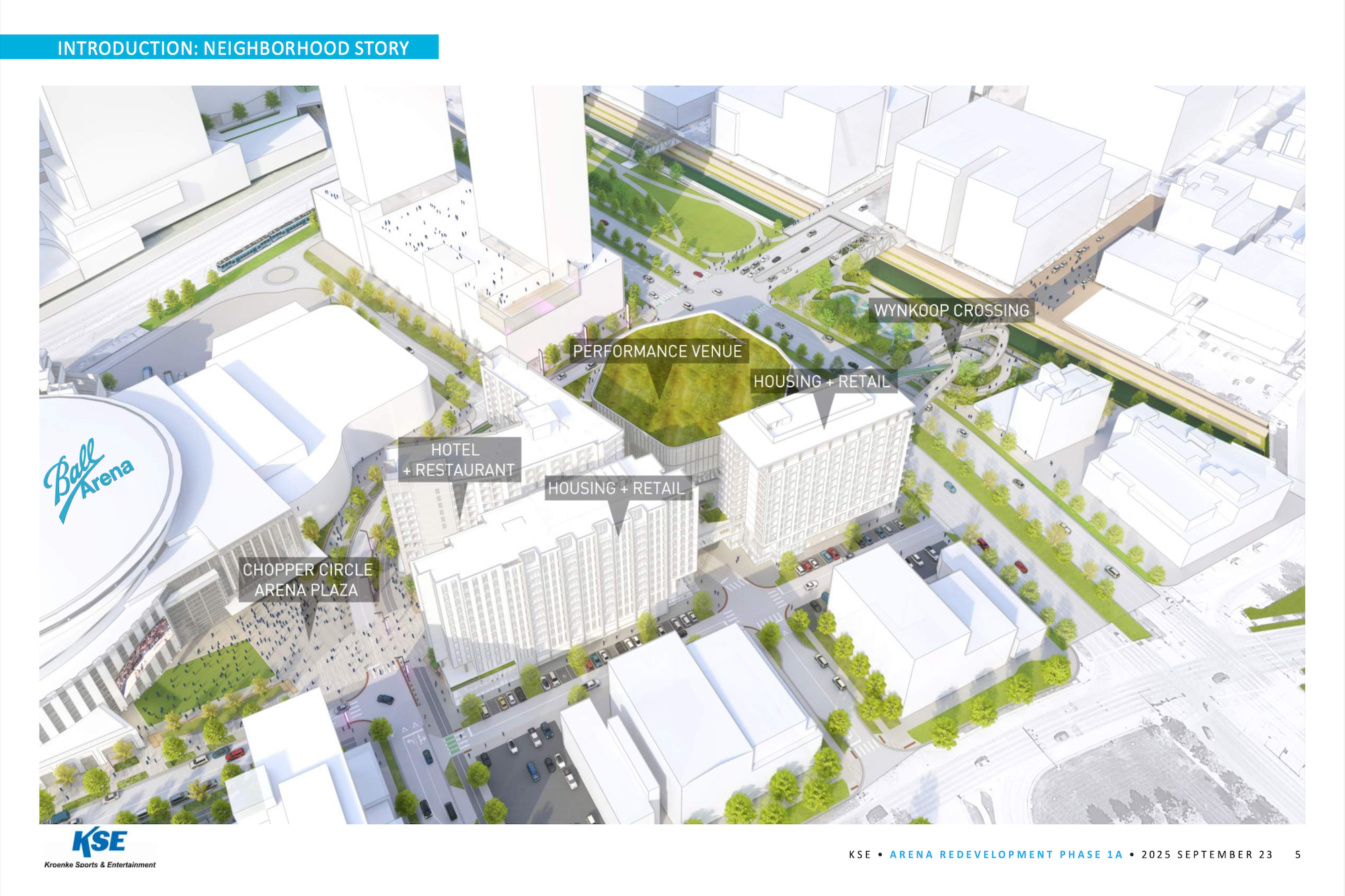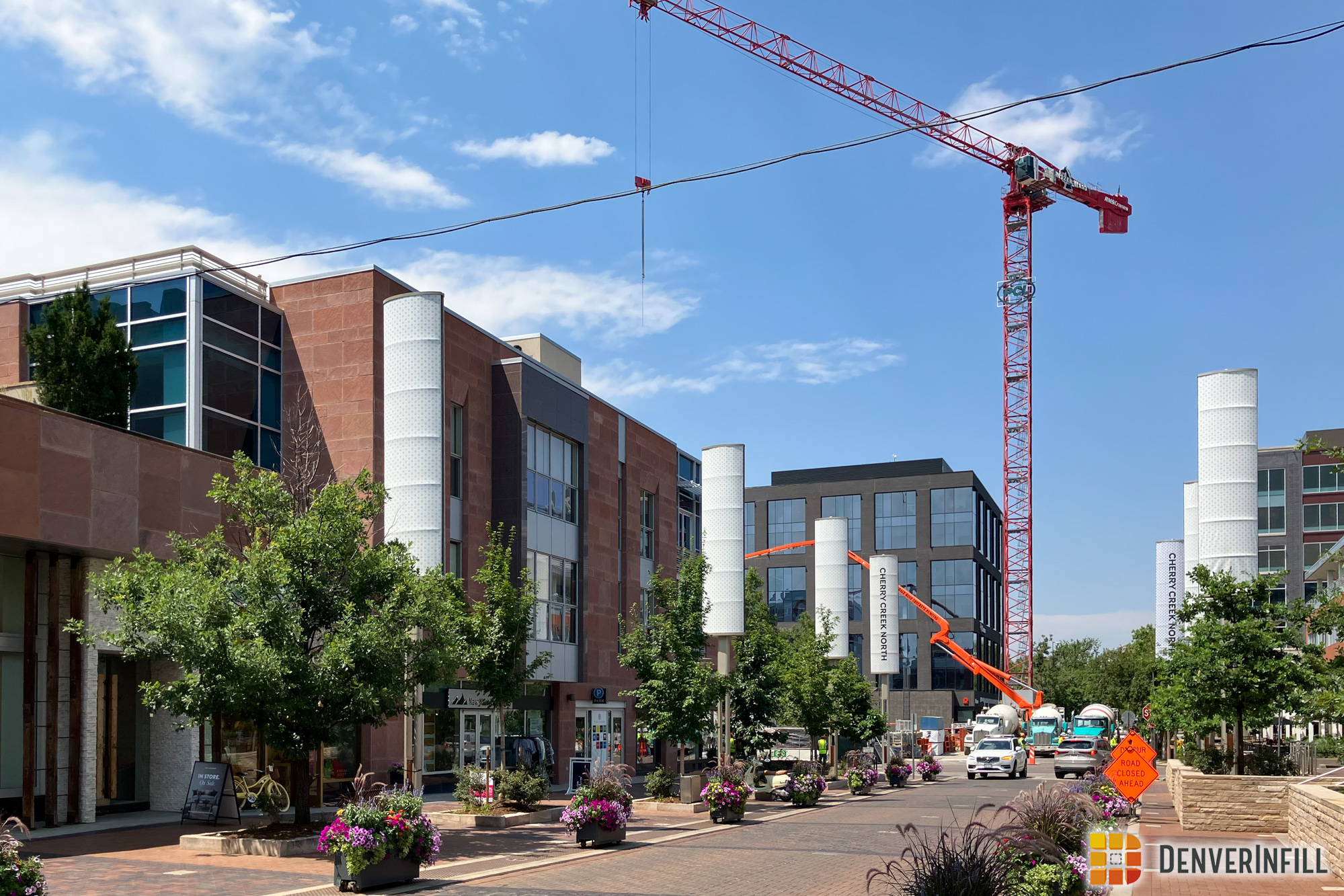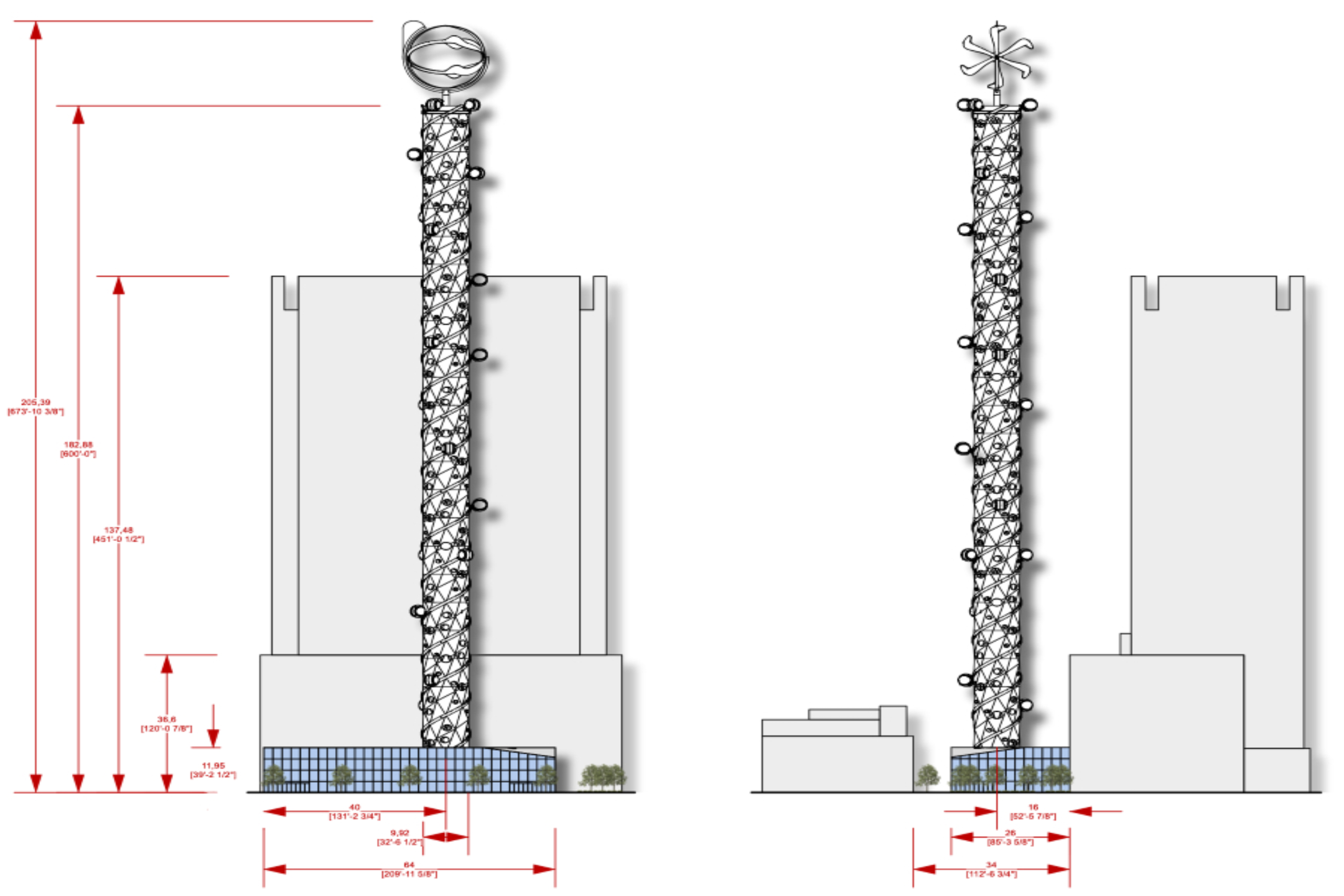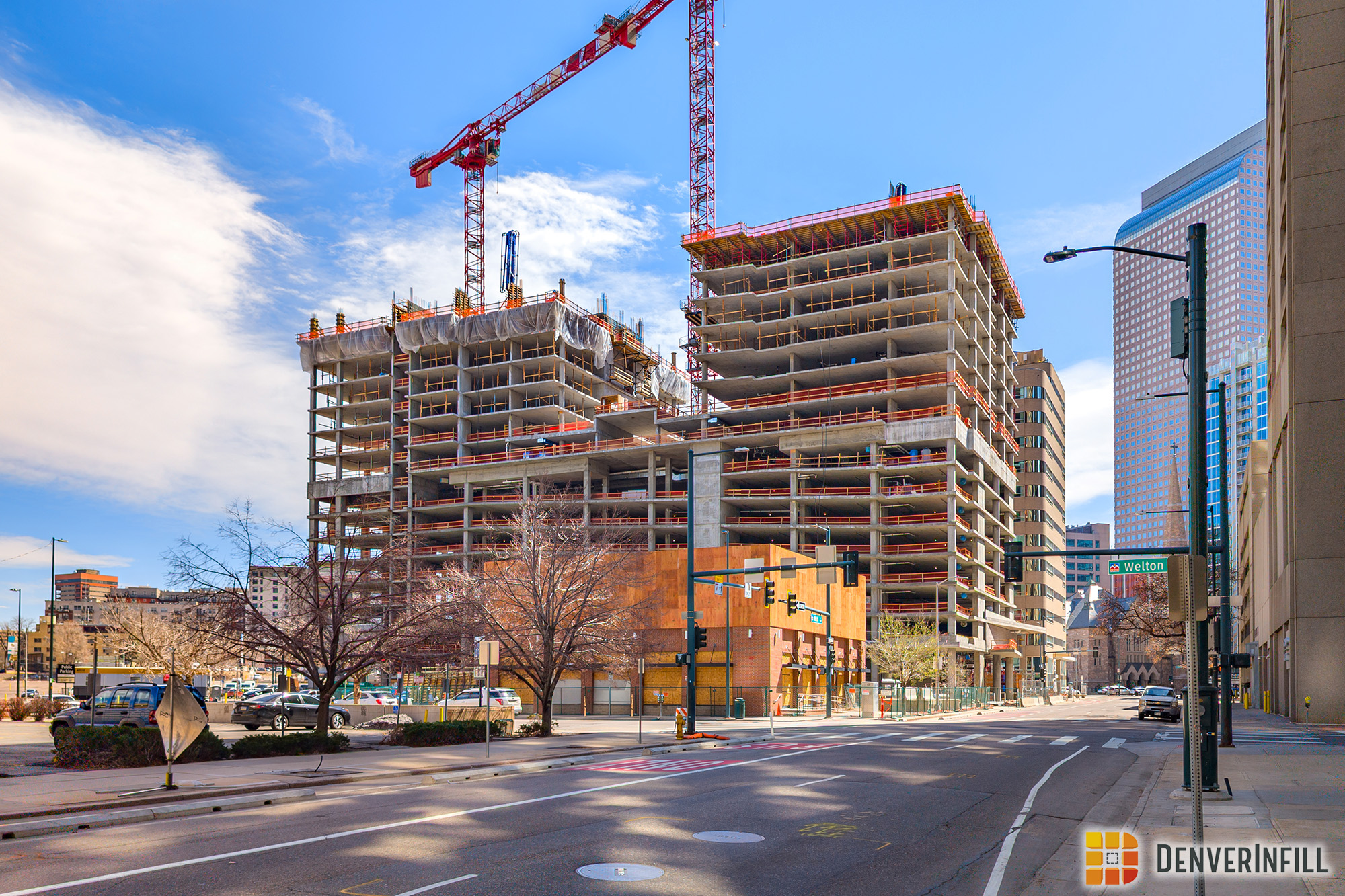Today we are going to be focusing on a new neighborhood development just north of Downtown Denver called Midtown. This isn’t going to be a typical infill post as it’s not downtown but it is worth taking a look at! Right around West 68th Avenue and Pecos Street there is a residential neighborhood being built from scratch. In the past, nothing has occupied the 184 acres of land except for a manufacturing and component testing facility. Since the facility’s shutdown in 2004, a ground water and environmental clean up started on the land and in 2007, the land was purchased with the vision of Midtown in mind. So how is this infill? Well, the land surrounding Midtown is already developed and this isn’t sprawling outside of what has already been established in the Denver metro area.
A couple of weeks ago, I met up with Tom Morton of Brookfield Residential and Perry Cadman of Brookfield Homes for an overview of this master planned development. I was able to peek inside some of the model homes and was also able to see their vision for Midtown.
Let’s start out with a couple of maps. On the left you will see how the land is going to be organized with the uses of each plot. On the right is an aerial view of the entire development, thanks to Norris Design. Also, as soon as the Gold Line commuter rail is complete, residences will be just up the street from the Pecos station.
Included in this development is a community center which will have the capacity to hold events, retail and a public garden. Some of the public garden land will be available to use in the future for mixed use development.
Phase 1 of this project is going to be mostly single family detached homes. On the maps above, you can see how many homes will occupy each block. This results in more land-efficient, alley-loaded, compact homes. The square footage for each house ranges from 1,797 to 2,228. Here is one example of many models that will be offered.
Interiors have both modern and contemporary finishes. Each home is envisioned with a sense of efficiency when it comes to lighting, energy, and space. This means there are many more windows, which are very energy efficient, customizable closets, kitchen and shelf spaces, an option for a finished basement, as well as a sealed house that doesn’t run up your heating and cooling costs. Let’s look at some interiors.
Prices will start from the high $200s and they have begun building the community. If you are seeking additional information, feel free to check out their website here.



















Just a minor correction. I think you meant to say just northwest or just north of downtown.
It’s funny the flier they sent me touted downtown like convenience. I guess when the gold line is complete it will seem closer.
Hopefully they will plan to meet some of the residents retail needs within the development because there is not much near by. A quick scan of the development map doesn’t seem to include much other than future mixed use at the community center. Possibly some in the area labeled main street.
Thanks for the update and keep up the great work
Upon closer inspection it appears they did set aside quite a bit of future mixed use space in the center.
I suppose you can’t expect retail before you have established residents. It might not turn out too bad if they eventually go midrise with ground floor retail in the center. Otherwise it still seems like a typical suburban layout only slightly more dense.
(A) This is not within reasonable walking distance of the Pecos station given the existing built environment.
On the easier route, the east side, you have to:
(1) walk past an industrial site,
(2) cross the river,
(3) Cross 64th (including, if I’m not mistaken, a right-on-red slip lane),
(4) walk past a lake with an industrial site on the other side,
(5) cross an expressway exit slip ramp with no light (very dangerous),
(6) cross another expressway exit lane,
(7) cross under I-76,
(8) cross an expressway entrance ramp,
(9) cross another expressway entrance slip ramp with no light (very dangerous),
(10) walk along and then cross 62nd Parkway
before you get to the overpass leading to the platform.
On top of the unpleasantness, it’s a bit over 4000 feet from the south end of the development to the station. This is longer than the pedestrian catchment of most stations, even ones where it’s a nice walk.
There’s going to be nobody walking to the Gold Line station from here. They won’t be biking, either, because there are no bike lanes. Some might take the #6 bus, if it comes frequently and reliably enough. The rest will drive.
(B) The proposed layout breaks the street grid. Yuck. There’s actually a pretty decent established street grid on the west side of Pecos north of the development, and this breaks it for no readily understandable reason. It manages to fail to create a street grid on the east side of Pecos, too.
(C) In short, this is an entirely suburban development.
Yeah, I would agree that currently there needs to be a significant improvement in the infrastructure to allow this project to be considered TOD from a bike/ped perspective. Hopefully, Adams County and this developer has plans to make those improvements.
I know park and rides get a bad name but this is exactly why they are needed and why I prefer to commute by train instead of car. Not everybody wants to go on a hike or on the Tour de France before and after work. I want to get off the train, get in my car and go home after a long day. Park and rides can imo only increase ridership on any given line by allowing access to commuters who don’t live right near a station. Just my two cents.
I know this will never happen here since the project’s well past this point, but will there ever be a day when developers pay to build street cars to/from light/heavy rail stops & the development(s)? Or, what about an HOA of an already-built community raising fees to help offset the costs of such a project? Is this being done anywhere? I know it’s not really necessary for the developer to do so, but I wonder if they could actually get a decent return on such an investment – say by increasing the price of the homes by 15%, for example.
I know there was talk about this type of practice to fund the transit expansions into the future.. IE North of the metro. Using sales fees/taxes on parcels close to transit to help offset the cost.
I agree and I don’t. Yes its not ‘urban’ by any means. Its sub-urban for sure. We can’t change people. IE They want houses. Not everyone wants to live in a dense complex. With that in mind I think this is great.
1) I could have been out in the boonies (Greenville ranch or whatever its call, or further north. Instead is relatively central. Which is always beneficial from a lifestyle/eco standpoint. Most likely, the peopel driving will be driving less than they would have if they lived further out.
2) Although they did destroy the street grid, from a car perspective, it appears they still kept the right-of-ways in place so peds can use the ‘old’ grid as if it was unchanged. That is all that really matters. Breaking the grid is really only inconvenient to those not in a car… Only cars need use the less efficient grid they have devised.
3) Its near a river/park/walkway. People will have opportunities to enjoy the beautiful Colorado weather without driving to some park somewhere else.
4) They are at least attempting to integrate residential with retail in order to reduce the need to ‘leave’ the community. Obviously this does require some critical mass which hopefully the developer as factored in.
5) Its reasonably close to a transit stop. Sure most won’t walk/cycle (some will) but many could park and ride and I bet plenty will. But hey. Its not downtown so who complaining. Its in a rather ‘cruddy’ area in imho. So give um a break. This could really help make that part of the river much nicer and be yet another fun destination within metro denver.
Neat to hear about.
I hope they eventually stop making STICK CITIES everywhere.
Cheap cheap cheap build….expensive sales….booooooooo!
So true. I see the same thing going on in Stapleton and am always left wondering what these neighborhoods are going to look like in 50 years when the sticks start to sag (if not sooner).
What would be the best material to use? Masonry is nice, but quite expensive. Steel maybe? Larger sticks? I’m seriously asking. Not trying to be a smart ass. 🙂
I see this as a “site looking for a use”. The site could have been gone back to industrial/manufacturing use, or been left vacant. At least they are trying to breathe some life into an otherwise drab part of town. No, its not urban and its not TOD, but its better than a factory!
I was out to the site today and am still digesting what I saw. I find the location to be excellent with relative ease to get to downtown but also easy access to both Boulder and west to the mountains. Not sure how many years until we see the Gold line go operational. Someone mentioned that there is little grocery shopping nearby. While this isn’t Cherry Creek, there is a relatively new shopping center with a Safeway at 72nd and Federal. The retail at 72nd and Pecos serves the local population. The mix might change if they get a couple hundred folks that can afford $350 to $400K homes—the price sheet I was shown with the average $15-25K upgrades.
Finally, while maybe not urban density, I was sorta amazed how many houses they are getting on a block. Several of the models have only six feet seperating them–not exactly suburbia!